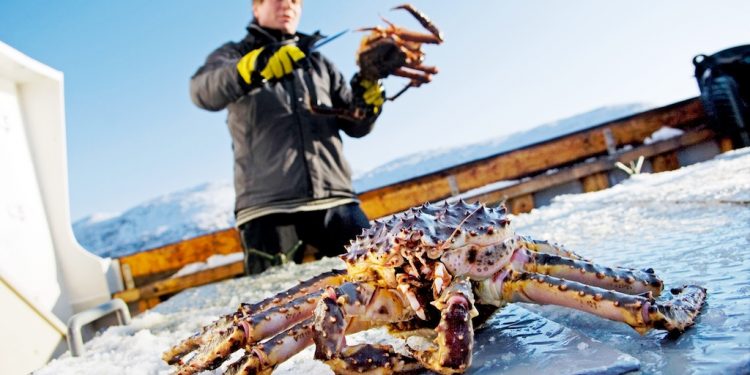Norway’s Institute of Marine Research has recommended that next year’s king crab quota should be set at a maximum of 2375 tonnes – a 530 tonne increase.
The Institute also recommends that free fishing for king crab should also be continued outside the quota-regulated area in East Finnmark.
Within the quota-regulated area east of the North Cape, the aim is to maintain a long-term commercial fishery, while also limiting as far as possible the westward spread of king crab. Outside East Finnmark, the goal is to keep the crab population as low as possible through a free fishery.
A king crab survey in the quota-regulated area was carried out this year between 5-26th September, with fjords and open sea areas surveyed using a variety of methods, including 88 tows and 79 video station observations. Researchers used video sleds for direct counting of crabs on the bottom, and also fished with lines at 27 stations. Crab caught using trawls or seines are part of mapping the size and gender composition of the stock.
‘This year, as there was last year, there was a temporary closure of the king crab fishery during the survey period,’ said Carsten Hvingel, the Institute’s stock manager for king crab.
‘The results from this year’s trip show an increase in the number of catchable males, which indicates that an increase in the quota is justified.’
The spread of king crab northwards from the coast of Finnmark, outside the quota-regulated area, is monitored on an annual basis during the ecosystem survey that encompasses the entire Barents Sea outside the coastal zones. There are currently no king crab identified further to the north.
A survey was also carried out in June to assess the density and spread of king crab west of the North Cape.
‘The density of crab in this area is a thousand times lower than in the quota-regulated area. It shows that the intensity of free fishing keeps the density of crab at a low level,’ Carsten Hvingel said.









